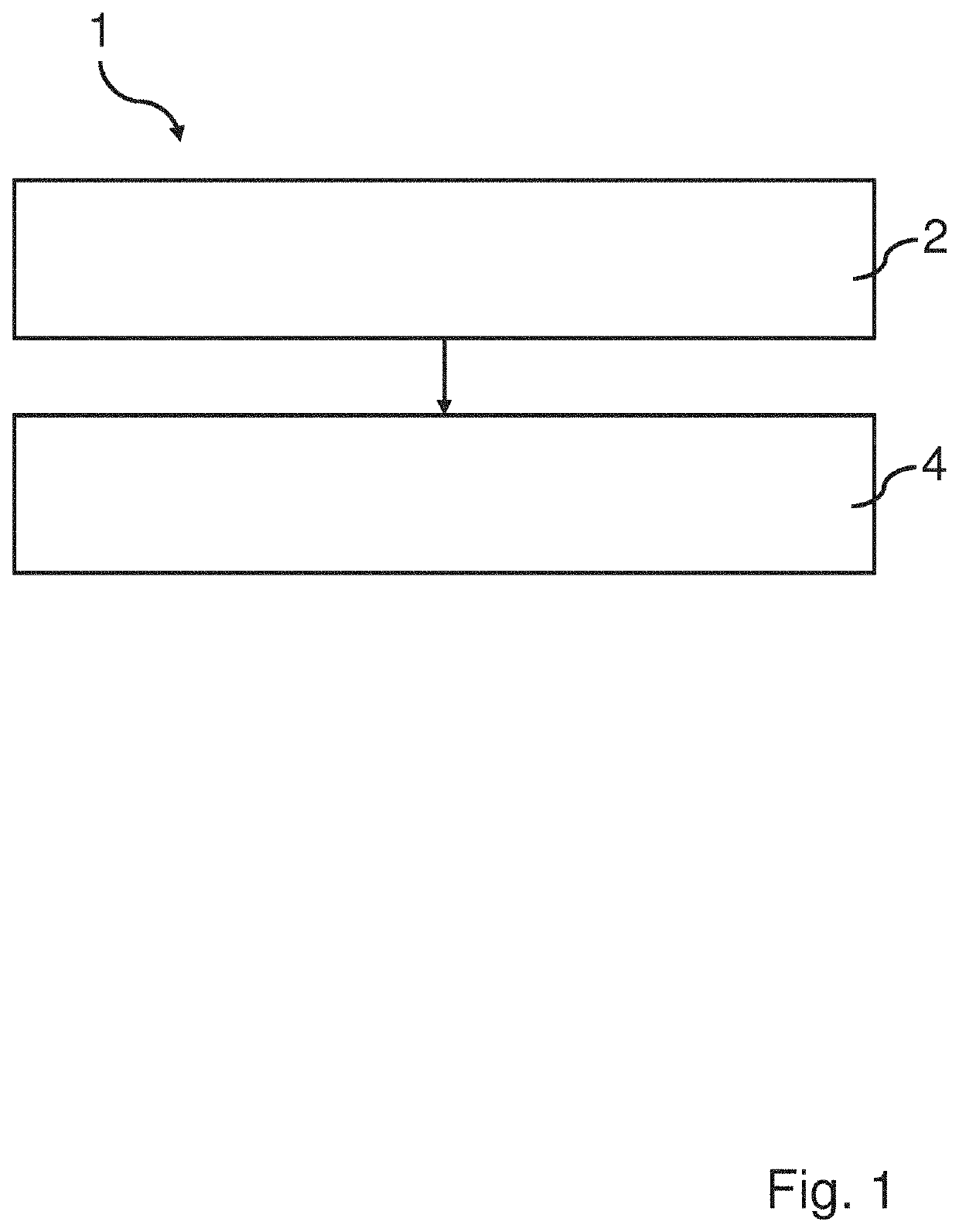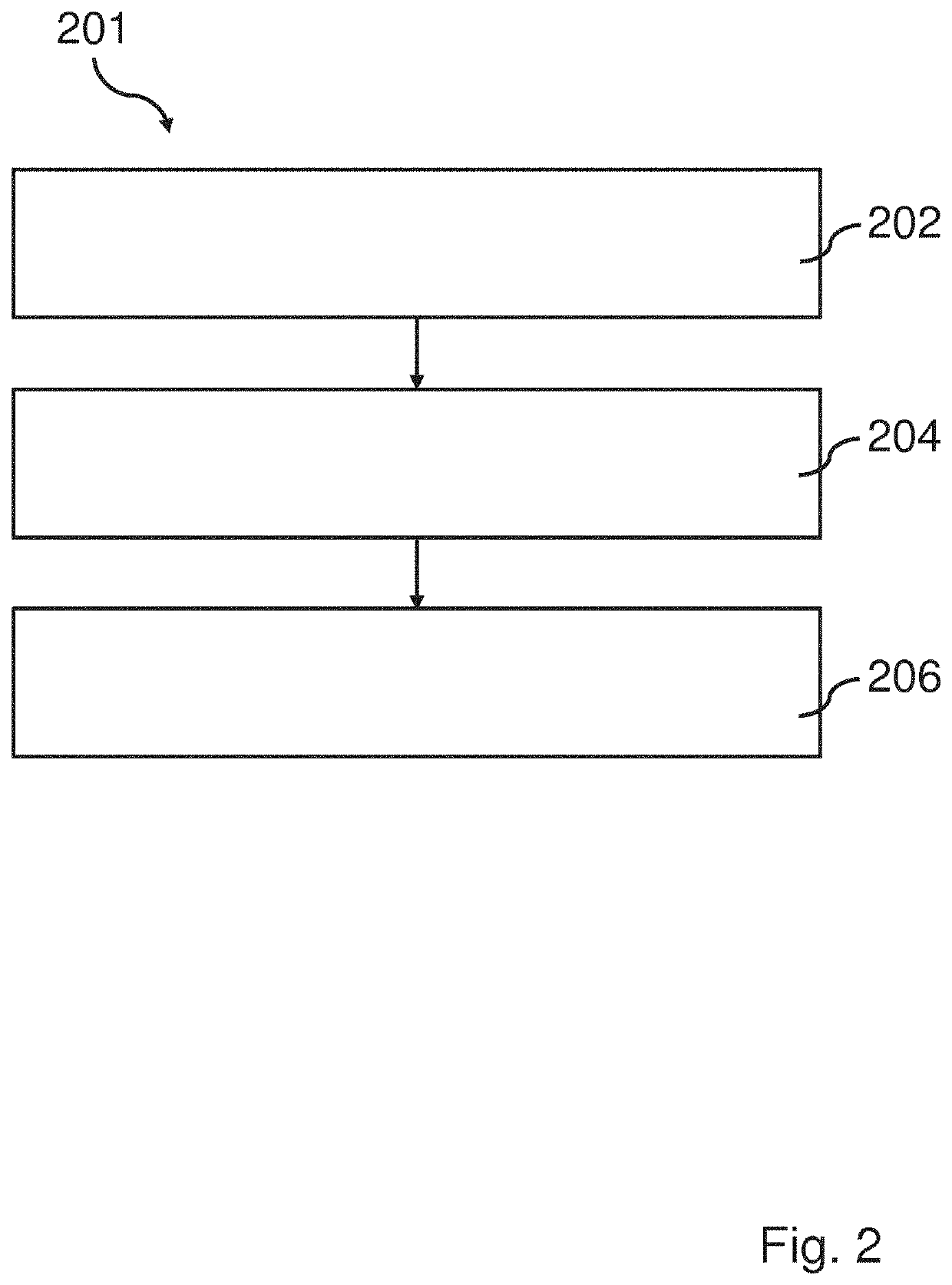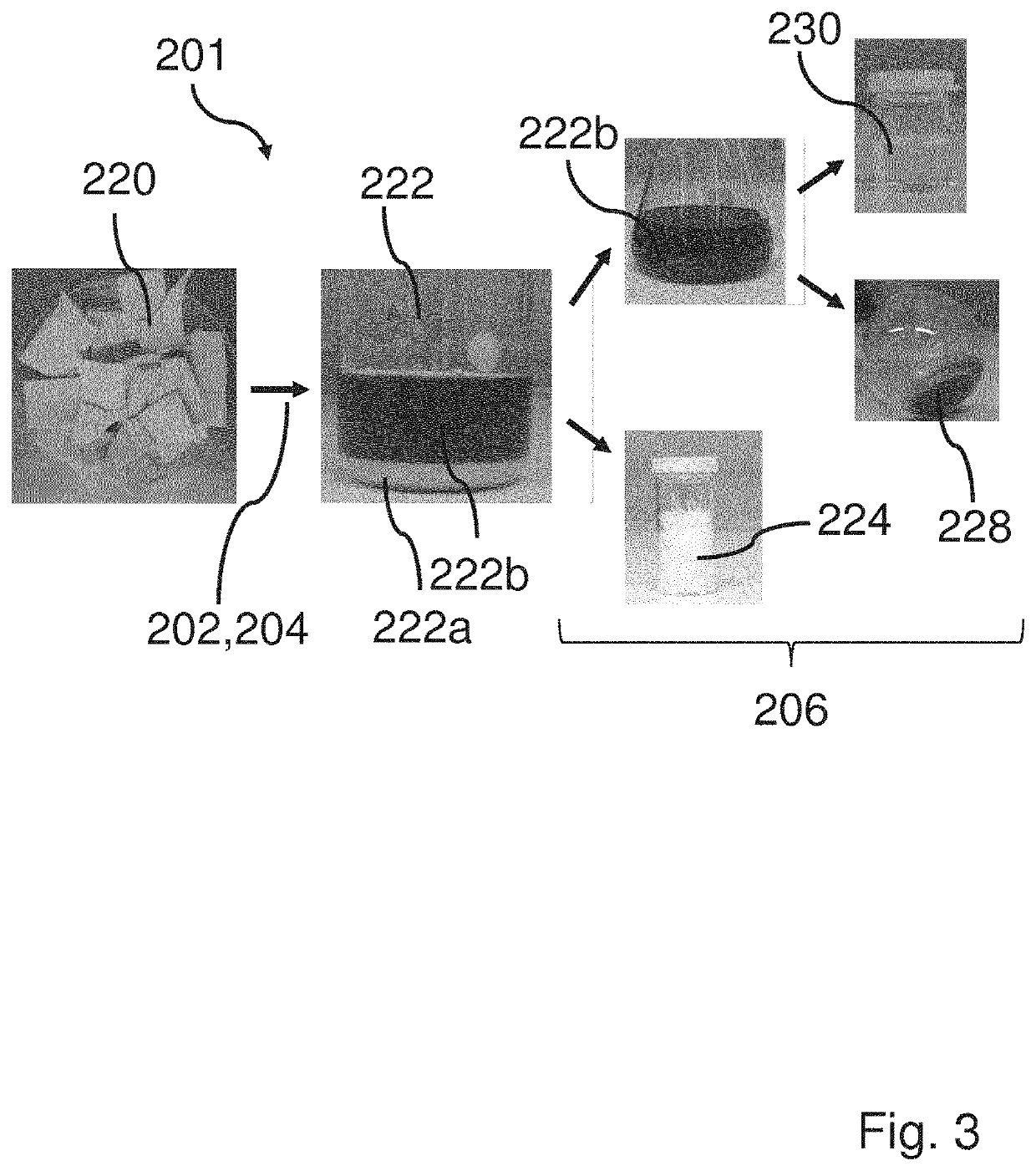Polyester textile waste recycling
- Summary
- Abstract
- Description
- Claims
- Application Information
AI Technical Summary
Benefits of technology
Problems solved by technology
Method used
Image
Examples
example 1
[0088]A mixture of 6 g of polyethylene terephthalate (PET) fiber soaked of 60 ml methanol and 0.12 g of CaO were put in an autoclave. The autoclave was heated to and maintained at 80° C. during the depolymerization. After 14 h, the autoclave was quenched to room temperature by cold water allowing precipitation of dimethyl terephthalate (DMT) as well as dimers and trimers of the polyester. The liquid fraction was separated from the solid fraction by filtration. 3.11 g of DMT was extracted from the solid fraction by methanol. Methanol and ethylene glycol were recovered by distillation of the liquid fraction.
example 2
[0089]A mixture of 6 g of PET-fiber soaked 60 ml methanol and 0.12 g of a CaO—CeO2 mixed oxide were put in an autoclave. The autoclave was heated to and maintained at 100° C. during the depolymerization. After 4.5 h, the autoclave was quenched to room temperature by cold water allowing precipitation of DMT as well as dimers and trimers of the polyester. The liquid fraction was separated from the solid fraction by filtration. 4.07 g of DMT was extracted from the solid fraction by methanol. Methanol and ethylene glycol were recovered by distillation of the liquid fraction.
example 3
[0090]A mixture of 6 g of PET fiber soaked in 60 ml of methanol and 0.12 g of a 1CaO-4MgO-1CeO2 mixed oxide were put in an autoclave. The autoclave was heated to and maintained at 135° C. After 4.5 h, the autoclave was quenched to room temperature by cold water allowing precipitation of DMT as well as dimers and trimers of the polyester. The liquid fraction was separated from the solid fraction by filtration. 4.61 g of DMT was extracted from the solid fraction by methanol. Methanol and ethylene glycol were recovered by distillation of the liquid fraction.
PUM
| Property | Measurement | Unit |
|---|---|---|
| Temperature | aaaaa | aaaaa |
| Temperature | aaaaa | aaaaa |
| Temperature | aaaaa | aaaaa |
Abstract
Description
Claims
Application Information
 Login to View More
Login to View More - R&D
- Intellectual Property
- Life Sciences
- Materials
- Tech Scout
- Unparalleled Data Quality
- Higher Quality Content
- 60% Fewer Hallucinations
Browse by: Latest US Patents, China's latest patents, Technical Efficacy Thesaurus, Application Domain, Technology Topic, Popular Technical Reports.
© 2025 PatSnap. All rights reserved.Legal|Privacy policy|Modern Slavery Act Transparency Statement|Sitemap|About US| Contact US: help@patsnap.com



